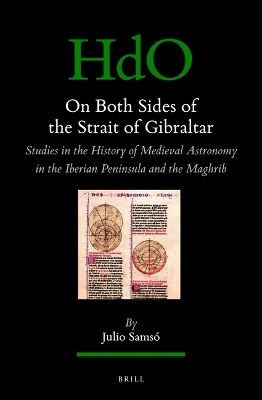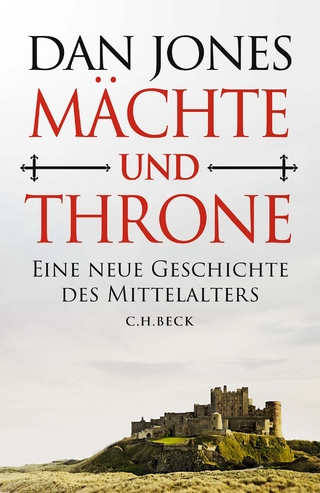
On Both Sides of the Strait of Gibraltar
Brill (Verlag)
978-90-04-43656-5 (ISBN)
In On Both Sides of the Strait of Gibraltar Julio Samsó studies the history of medieval astronomy in al-Andalus (Muslim Spain), the Maghrib and the Christian kingdoms of the Iberian Peninsula. He proves that the Arabic, Latin, Hebrew, Castilian and Catalan sources belong to the same tradition whose origin can be dated in the 11th century due to the changes in Ptolemy’s astronomical theory introduced by the Toledan astronomer Ibn al-Zarqālluh/Azarquiel.
The book also analyses the role of al-Andalus and the Iberian Peninsula in the transmission of Islamic astronomy to Europe and justifies the fact that Eastern Islamic works published after ca. 950 CE were not accessible to medieval European scholars because they had not reached al-Andalus.
Julio Samsó, Ph.D. (1966), University of Barcelona, is Emeritus Professor of Arabic and Islamic Studies at that university. He has published books and many articles on the history of medieval astronomy in al-Andalus and the Maghrib, including Las ciencias de los antiguos en al-Andalus (2nd edition, Fundación Ibn Tufayl, 2011), Islamic Astronomy and Medieval Spain (Variorum. Aldershot, 1994), Astronomy and Astrology in al-Andalus and the Maghrib (Ashgate Variorum. Aldershot, 2007).
Preface
List of Figures
1 Historical Outline
A Brief Chronological Survey
1.0 Foreword
1.1 Al-Andalus (711–1085)
1.2 The Maghrib (700–1050)
1.3 Almoravids (ca. 1050–ca. 1147) and Almohads (ca. 1147–1276)
1.4 Al-Maghrib and al-Andalus between the Thirteenth and the Fifteenth Centuries
1.5 Astronomy in the Christian Kingdoms of the Iberian Peninsula
1.6 A Brief Conclusion
2 Mīqāt: Timekeeping and Qibla
2.0 Introduction
2.1 Calendars and Years
2.2 Eras
2.3 The Beginning of the Lunar Month
2.4 The Hour
2.5 The qibla
3 Astrology
3.0 Introduction
3.1 Patronage and the Practice of Astrology
3.2 Thematic Surveys
4 Astronomical Instruments
4.0 Introduction
4.1 Spherical Instruments
4.2 The Astrolabe
4.3 Universal Astrolabes
4.4 Quadrants
4.5 Equatoria
4.6 Jābir ibn Aflaḥ’s Observational Instrument
5 Hayʾa (Cosmology)
5.1 Introduction: on the Meaning of Hayʾa in Western Islam
5.2 The Treatises on hayʾa by Dūnash ibn Tamīm, Qāsim ibn Muṭarrif and an Anonymous Eleventh-Century Toledan Astronomer
5.3 Jābir ibn Aflaḥ’s Mathematical Criticism of the Almagest
5.4 The Twelfth-Century Andalusī Revolt against Ptolemy
5.5 Hayʾa in Castile during the Reign of Alfonso X (1252–1284)
5.6 Other hayʾa Sources between the Twelfth and the Fifteenth Centuries
5.7 Conclusions
6 Astronomical Theory
6.1 Introduction
6.2 The Motion of Accession and Recession of the Equinoctial Points (al-iqbāl wa l-idbār, Trepidation Theory)
6.3 Ibn al-Zarqālluh’s Solar Model
6.4 The Lunar Model
6.5 Conclusions
7 Astronomical Tables (zījes)
7.1 Introduction: the Eastern Input in al-Andalus
7.2 A General Survey of Andalusī and Maghribī zījes
7.3 Maghribī zījes: the School of Ibn Isḥāq
7.4 Other Maghribī zījes
7.5 The Introduction of Eastern zījes in the Maghrib
7.6 Zījes in the Christian Kingdoms of the Iberian Peninsula
7.7 Almanacs and Ephemerides
7.8 Conclusions
Bibliography
Index of Parameters and Numerical Values
Index of Names and Subjects
| Erscheinungsdatum | 09.10.2020 |
|---|---|
| Reihe/Serie | Handbook of Oriental Studies. Section 1 The Near and Middle East ; 144 |
| Verlagsort | Leiden |
| Sprache | englisch |
| Maße | 155 x 235 mm |
| Gewicht | 2012 g |
| Themenwelt | Schulbuch / Wörterbuch ► Lexikon / Chroniken |
| Geschichte ► Allgemeine Geschichte ► Mittelalter | |
| Geisteswissenschaften ► Geschichte ► Regional- / Ländergeschichte | |
| Naturwissenschaften ► Physik / Astronomie ► Astronomie / Astrophysik | |
| ISBN-10 | 90-04-43656-1 / 9004436561 |
| ISBN-13 | 978-90-04-43656-5 / 9789004436565 |
| Zustand | Neuware |
| Informationen gemäß Produktsicherheitsverordnung (GPSR) | |
| Haben Sie eine Frage zum Produkt? |
aus dem Bereich


